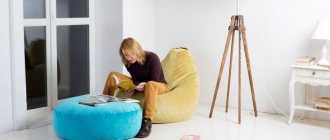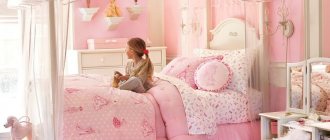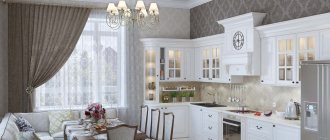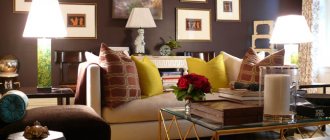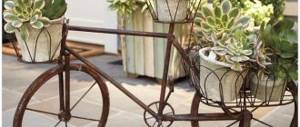Carpets in the interior have long become indispensable assistants in the design of space. They can cover up old linoleum, create an atmosphere of comfort, place accents and help with zoning.
One small rug can change the entire perception of a room.
Types of carpets
When choosing, you should pay attention to the material that was used in production. The service life and preservation of a presentable appearance depend on it, which is why it is so important to pay attention to the composition of the product.
Synthetic
They are made from chemical threads: nylon, polypropylene, acrylic, polyester. The fibers easily accept any paint, allowing you to create interesting, bright rugs. Such products are notable for their low price, but they do not last long.
Viscose
Viscose coverings hold their shape for a long time, are UV resistant and very fluffy. They are very similar to their wool counterparts, but the cost is much lower.
They can even be used on loggias and dachas; the material does not fade and the colors do not fade.
Environmental materials
The natural properties of linen, jute, bamboo and cotton provide comfort and health benefits. They do not contain aggressive allergens and can be easily placed even in children's rooms.
The main thing is to take into account the density and coarseness of the weaving, which is not compatible with all style solutions. The price is affordable and affordable for many.
Silk
Even if the manufacturer adds synthetic fibers to silk, the price will be high. Silk dyes lusciously and can last a very long time. Such carpets in the living room interior add a special chic and go well with oriental style.
Wool
Eternal classics of carpet production. It retains heat perfectly, has an excellent ability to dampen sounds, and is resistant to abrasion. The price is still high, despite attempts to reduce the cost of production.
Why do they buy it?
Modern apartments and houses can do without carpets, because technologies and materials make it possible to insulate and decorate a room without them.
What are the remaining functions of carpets in a modern interior?
- Decoration. A well-chosen bright accent can transform even a dark room.
- Zoning. Various shapes and colors allow you to separate relaxation areas from the workplace.
- Floor insulation. This is especially true for the winter period.
The appropriateness of the carpet is determined by the overall style of the room.
Modern Soviet interior in apartments
The Soviet era left us a huge legacy in the form of interior items. And indeed, now it’s not uncommon to find apartments with a carpet on the wall, or even two. Huge floor-to-ceiling cabinets are still preserved. And what can we say about the walls? It’s difficult to part with this item, not only out of nostalgia for bygone times, but also because there’s simply nowhere to put everything hidden in it anywhere. And it’s extremely problematic to remove such a mountain of furniture from the apartment. (How did they bring her there?..)
What can be done with such a rich heritage? How to use Soviet furniture in a modern apartment to keep up with the times?
Oval carpets
Fashion came to Russia along with the Rococo and Baroque styles; this combination has survived to this day. Most often, oval carpets in the interior are used for the following purposes:
- Designation of a leisure area near a sofa or armchair.
- Emphasis on the bay window.
- Emphasizing the entrance to the loggia or balcony.
Before purchasing, you should consider the color and size so that the product does not stand out from the overall picture.
Rectangular carpet for the floor in the living room
The use of rectangular or oval-shaped carpets near the sofa is the most relevant.
Note! Living room in a classic style: review of modern ideas (70 design photos)
The floor can be completely or partially covered. But to make the product look more harmonious, experts advise leaving at least 20 cm of free space to the edge of the walls.
An excellent option for making the carpet stand out from the general look is a bright border strip that matches the color scheme of some design elements.
Thus, the product will not merge with the floor and will perform not only a technical function, but will also serve as decorative decor.
Photos of carpets in the interior
Wall decor: 75 original photo ideas on how to transform your home interior. Designer tips on how and what to decorate an empty wall
- Wood decor - combining ideas and reviewing the main design elements using wood (120 photos)
Candle decor - examples of use in the interior, beautiful ideas and combinations in design (105 photos)
Read: Candle decor - examples of use in the interior, beautiful ideas and design combinations (105 photos)
Did you like the article? Please share with your friends 
0
Write a comment
New designs
Provence curtains - design ideas and review of ideal combinations of curtains in a rustic style (110 photos and videos)
Minimalism in an apartment - interior ideas and design options. Tips for using different styles (100 photos)
Kitchen-living room 20 sq. m. - design ideas, interior design options and an overview of the most stylish combinations (110 photos)
Decorating the living room - tips on choosing colors and materials. Review of the most beautiful ideas for decorating a living room (90 photos + video)
Carpets to the masses!
Comrade Lenin declared: “Art belongs to the people.” And the Soviet people themselves were energetically drawn to beauty. Many people hung reproductions of paintings from Ogonyok magazine at home. For some reason, Soviet citizens especially loved the portrait of “The Unknown” by Ivan Kramskoy. The image of a bourgeois stranger even appeared in village huts.
Kramskoy’s “Unknown Woman” looks at you with silent reproach
For a long time there simply were no other means of interior decoration. The official ideology encouraged asceticism in everyday life. Geraniums on window sills, carpets and pillows - all this was considered a relic of the past. But the forbidden fruit is sweet! No matter how hard the authorities tried to instill in the people Gorky’s idea of the dangers of philistinism, people dreamed of such “excesses” as a polished wall and crystal dishes.
